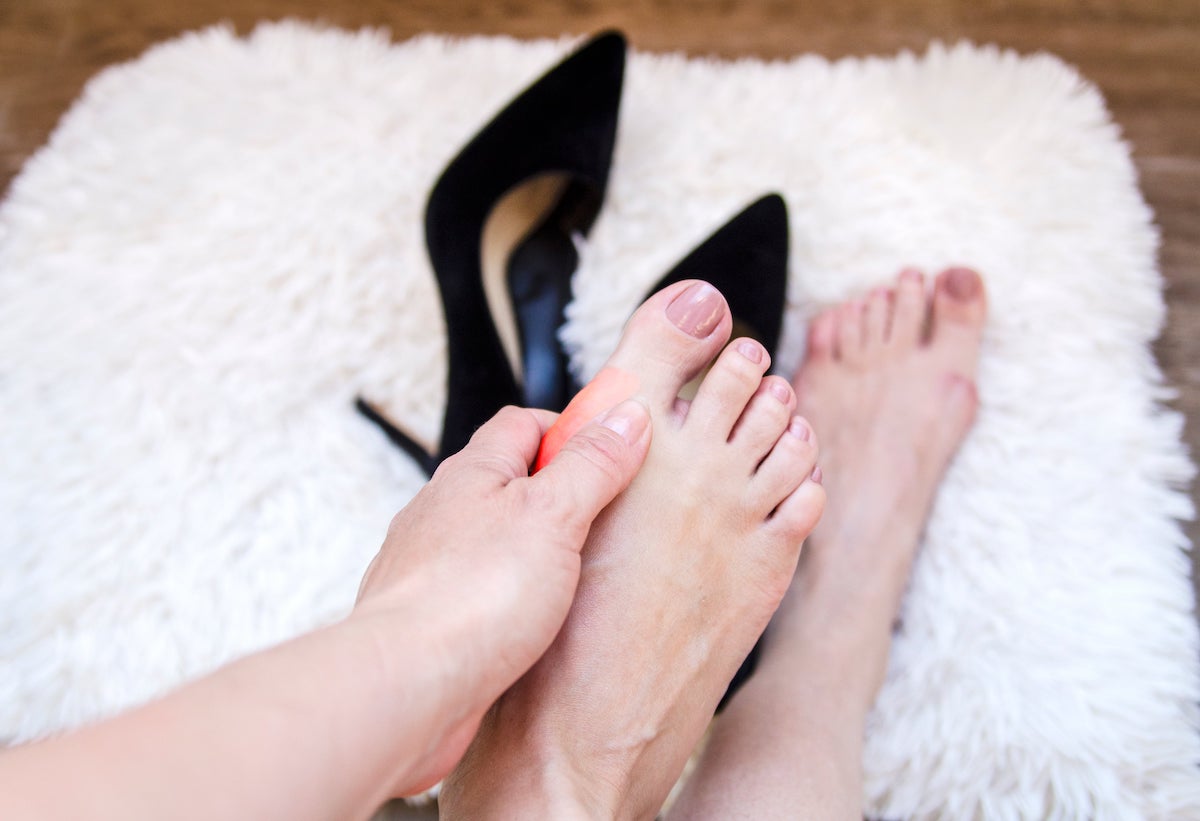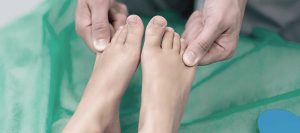
It is easy to ignore or brush off the first signs of a medical problem. A pain here or there may come and go, or you can seemingly resolve the issue (at least temporarily) with some ibuprofen or other simple at-home treatment.
But your ability to convince yourself that a problem is no big deal can crumble when those initial signs get worse, as they often do. Many conditions are degenerative.
That means that things will continue to get worse and harder to fix the longer you wait to get treatment. This is the case with bunions and/or bunionettes.
So, if you’ve noticed pain, discomfort, swelling, or a change in shape in the area around the outside of your big toe, don’t blow it off.
There is a good chance you’ve developed a bunion and an even better chance that it will cause you increasing problems in the future.
That’s why it is important to understand the early signs and symptoms of bunions.
Why Do Bunions Develop?
The big toe has two important joints. The metatarsophalangeal joint (MTP) is the larger of the two and connects the first long bone of the foot ( the metatarsal) to the first bone of the toe (the phalanx). The is where bunions develop.
A bunion, also called hallux valgus, forms because the MTP joint shifts out of its normal alignment, pushing the long metatarsal bone towards the inside of the foot.
This misalignment also forces the phalanx bones of the big toe inwards towards the second toe.
Bunions develop for different reasons in different people.
Some individuals have a genetic predisposition for bunions, so if one of your parents developed a bunion, you likely have higher odds of getting one as well.
For other people, usually women, wearing shoes with a narrow, pointed toe box can force the toes into an unnatural position and put severe pressure on the toe joint.
Inflammatory conditions such as rheumatoid arthritis can also cause bunions.
What Are The First Signs of a Bunion?
Bunion symptoms often only appear after months or years of the big to working its way inward towards its next-door neighbor.
As time progresses, a sensitive bony bump that looks swollen and red will emerge at the site of the joint on the inside of your foot.
Early symptoms include foot pain in the area around the big toe, especially while walking or wearing shoes.
Eventually, the pain and the protrusion caused by the bunion may become more intense and consistent, making walking an increasingly uncomfortable experience
Bunions Are Treatable: The Sooner, The Better
Fortunately, there are several treatment options for bunions, and sooner you start addressing the issue, the less likely it is that you will need surgery to correct the deformity.
Conservative treatments for early-stage or less developed bunions can include at-home remedies that can alleviate pain, changes in footwear, and custom orthotics that can slip into your shoes and change the amount of pressure you put on the bunion when you walk.
At JAWS Podiatry, we always prefer non-surgical or minimally invasive treatments for bunions whenever possible and effective.
Buts some bunions may need surgery to be fully resolved.
Bunion surgery involves removing or realigning the soft tissue and bone in the area to bring the joint back into its correct alignment.
To keep the bones in place, small screws, plates, or wires may be inserted as part of the surgery.
Get Rid Of Bunion Pain Today!
At JAWS Podiatry in Hollywood, Florida, we use the most advanced and non-invasive techniques to reduce pain and speed recovery for individuals suffering from bunions, bunionettes and other foot and ankle problems.
If you’d like to learn more about the innovative and effective treatments we provide or how we can help you with your foot and ankle issues, please call us today at (954) 922-7333 or submit an inquiry to schedule a consultation.
- The Life-Changing Power of Cosmetic Foot Surgery - February 27, 2023
- What Are The Most Common Pediatric Foot Conditions? - October 5, 2020
- 4 Important Things To Know Before Having Foot Surgery - September 21, 2020



